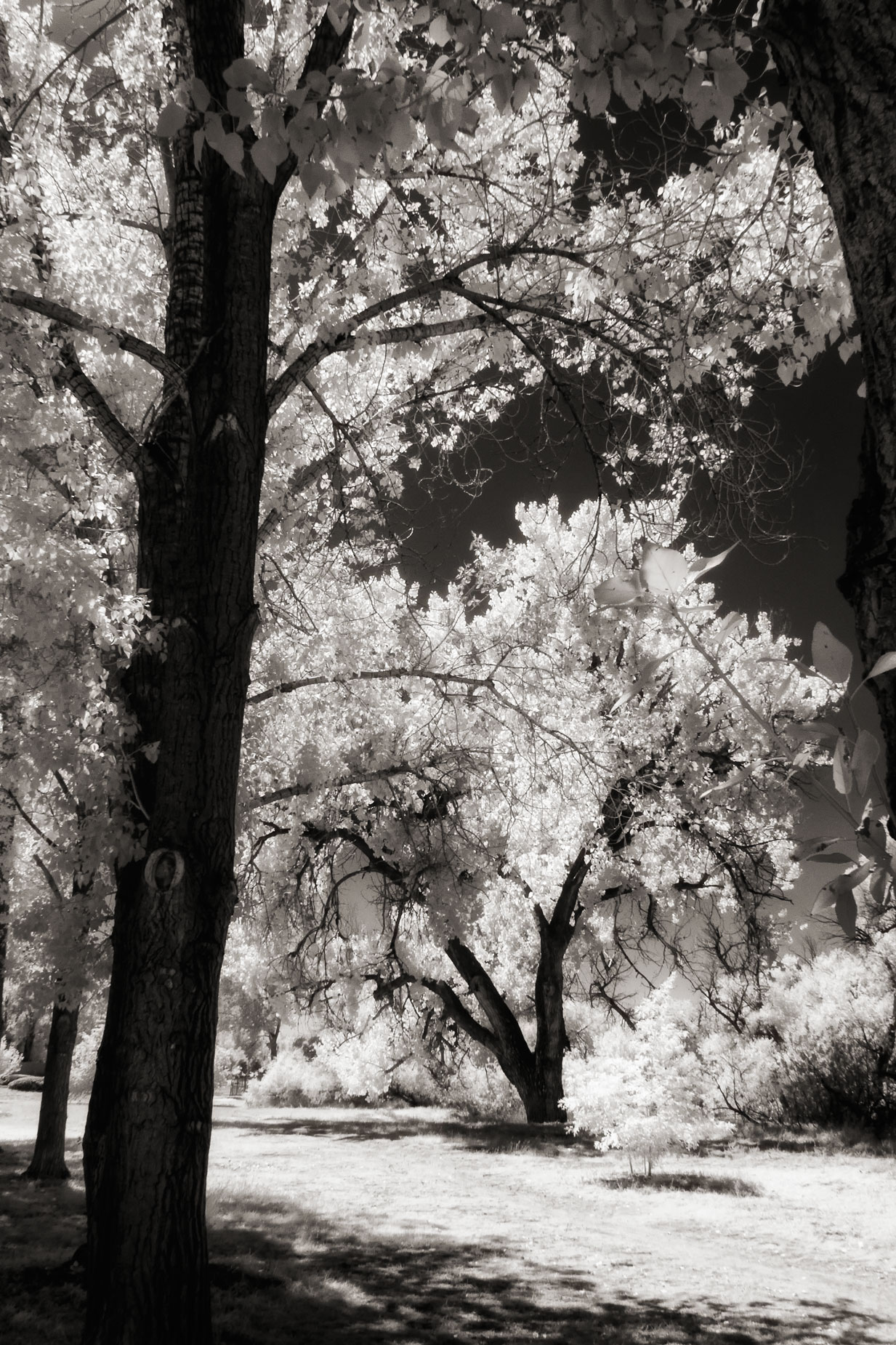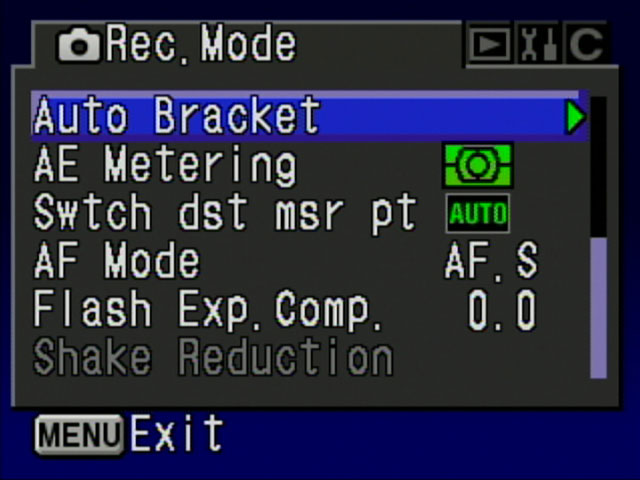Today’s Post by Joe Farace
“To me, infrared photography is not a special effect like some Instagram filter, it’s a different way of looking at photography and light and the world itself.”— Dean McIntyre
My wife has always thought that digital infrared photographs render landscapes as if they were glowing, moonlit or immersed in an extraterrestrial light. I think that’s because of the nearly white reproduction of most vegetation’s chlorophyll that digital IR provides, That’s the good news. The bad news is that most (or all) exposure meters, either hand held or in-camera, are not sensitive to infrared light. (There are some modified light meters available that are sensitive to IR but I have never tested one.) When shooting infrared that fact can makes it difficult to calculate exact exposures either when shooting with on-camera filters or when working with a converted camera, as was the case with the featured image (below right.) If you are interested in more detail on these particular subjects, please check out my two-part YouTube video series on these subjects, here and here.

What’s it All Mean?
Here’s the problem: When it comes to calculating exposure for infrared photography, two subjects in the same frame that appear equally bright under visible light might actually reflect infrared radiation at significantly different rates and have different brightness when captured with an IR-converted camera or when using infrared filters. That may make getting the proper exposure appear to be challenging but that doesn’t mean you shouldn’t try, especially since DSLRs and mirrorless cameras provide instant feedback via their LCD screen or EVFs.
How I made this photograph: Today’s image was made as part of my Last Chance Infrared series when I was photographing McCabe Meadows at a time when I anticipated all of the leaves would be gone from the trees. The image was made using a Panasonic Lumix G6 that had been converted by LifePixel using their Enhanced Color IR Filter (665nm filter.) The lens was the Lumix G Vario 12-32mm f/3.5-5.6 kit lens at 17mm with an Av exposure of 1/320 sec at f/16 and ISP 400. Keep in mind that using really small apertures can produce diffraction. You can read more about diffraction in this post. The RAW file was converted to monochrome using Silver Efex.
My experience with my Lumix G6 with the Enhanced Color IR Filter conversion that was used to make the featured photograph is that it tends to slightly underexpose when shooting landscape images, even though the image on the LCD may look perfect. Histograms, because they are based on the visible light spectrum, aren’t always a good indication either. That’s why if you’re just getting started in digital IR photography it’s a good idea to bracket three to five different exposures because you can’t always count on your LCD screen to reflect you the same result when viewing the files later on a calibrated monitor.
Most cameras offer a built-in bracketing function but even if your camera doesn’t have a bracket function it should have an Exposure Compensation control that lets you adjust exposures on one-half or one-third stops while in the various automatic exposure modes. As you get more experience you’ll learn what you have to add (probably not subtract) exposure to the image. With my Lumix G5 and G6 cameras—keep in mind that yours may be different—I almost always have to add PLUS one- or two-thirds stop exposure compensation for images made with these cameras.
 And that is why, when shooting infrared, I often shoot in manual mode. You don’t need a hand held exposure meter to get started shooting in manual mode. I typically look through the lens with the camera in Program mode and see what the suggested exposure is, then transfer that shutter speed and aperture to the camera after switching to manual mode. You are now free to change shutter speed or aperture just like in the good ole days.
And that is why, when shooting infrared, I often shoot in manual mode. You don’t need a hand held exposure meter to get started shooting in manual mode. I typically look through the lens with the camera in Program mode and see what the suggested exposure is, then transfer that shutter speed and aperture to the camera after switching to manual mode. You are now free to change shutter speed or aperture just like in the good ole days.
 I’ve found that Life Pixel does a great job with IR conversions and they’ve done most of the conversions for my Canon DSLRs and all of my Panasonic Lumix G-series cameras. This is not a paid or sponsored endorsement, just my experience.
I’ve found that Life Pixel does a great job with IR conversions and they’ve done most of the conversions for my Canon DSLRs and all of my Panasonic Lumix G-series cameras. This is not a paid or sponsored endorsement, just my experience.
Used copies of my book, The Complete Guide to Digital Infrared Photography are currently available used from Amazon for $36.20 as I write this. Creative Digital Monochrome Effects has a chapter on IR photography and new copies are available from Amazon for $11.46 with used copies starting at a little more than three bucks, which is a heckuva deal.